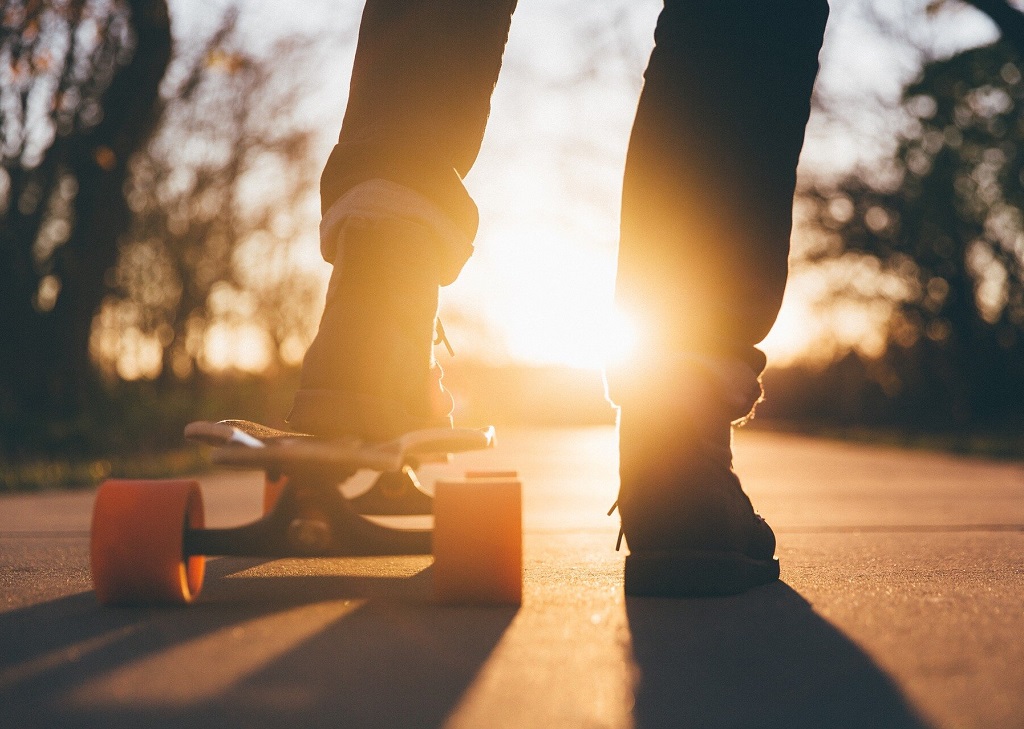11 Dec 2024

Tired Earth
By The Editorial Board

Skateboarding is a "polluted" leisure activity which both harms the environment and boosts sustainability, a new study argues.
The sport takes place in "gray spaces" unlike blue and green leisure activities held in rivers, lakes, parks and gardens. But it also occurs in a conceptual gray space of nuance and ambiguity.
Skateboarding has had a remarkable ascent from teen fad and feral subculture to Olympic sport, but researchers say it is still a mix of sport, art, performance, activism, business and play.
The study says grayness can also be seen in skateboarding's political, social and environmental ambiguities, also found in other sports which use gray spaces, including cycling, parkour and roller blading.
The study, by Paul O'Connor, Clifton Evers, Brian Glenney and Indigo Willing is published in the journal Leisure Studies.
Dr. O'Connor, from the University of Exeter, said, "It is easy to assume that skateboarding equates to having a low ecological footprint given how skaters traverse places while relying on their own breath and legs. Yet, skateboarders play in cities with heavy air pollution largely the result of streets perpetually jammed with cars, which are a major cause of skateboarding deaths and a frequent cause of injury."
"Skateboarders and the production of skateboard media are heavily invested in travel. In contrast, efforts have been made to make skateboard consumption 'green'—experiments in bamboo boards, hemp clothing and other sustainable products."
In north-east England, the skateboarding community is developing and using more environmentally friendly concrete—unrecyclable plastics as aggregate for concrete and testing bioengineering of concrete—to build skateable architecture. Other skaters resist these efforts.
Legislation and defensive architecture exclude skateboarding from many gray urban zones. The study describes how this exclusion pushes skateboarders to seek out appropriate sanctioned spaces in which they can skate, often isolated sites are chosen by those in power so as not to upset residents.
Some skateparks leave those who take part in the sport subject to pollution. Roadside skateparks under highway bridges and flyovers are common worldwide. Many skateparks have been constructed on brownfield and contaminated locations such as waste dumps and former sites of industrialization and capital extraction.
Dr. O'Connor said, "Skateparks are promoted as a greening issue for brownfield sites because the concrete base of these facilities can act as a cap on top of contaminated soil. However, the fact that skateparks are concrete constructions points to the fact that these green spaces are in fact gray spaces, somewhere between a space of contamination and its prevention."
"At some DIY skateparks, weeds and shrubbery have gained a foothold in urban environments that have been left alone. These plants can also hide skateboarding activities from passers-by while in turn the presence of skateboarders helps preserve nascent biodiversity that has managed to return and gain a foothold in urban wasteland zones."
"Skateboarders arguably become caretakers of gray spaces. Sometimes skateboarders bring love to grayness. After the earthquake in Christchurch in 2011 skateboarders seized the opportunity to skate on devastated, twisted and ruptured roads. They brought play to a traumatized community, and hope. Skateboarders evidence how to navigate, rework and revitalize not just gray spaces, but gray times."
Source : phys.org
Comment